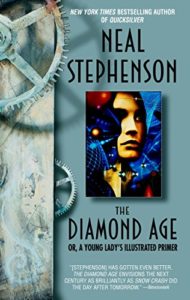Do machines complement labor, leading to higher wages and better living standards for ordinary workers? Or do they substitute for labor, driving down living standards for ordinary workers and concentrating wealth in the hands of the few?
We are now in the midst of what many economists call the Second Industrial Revolution. The First Industrial Revolution introduced machines with physical power. The Second Industrial Revolution induces machines with mental power.
The First Industrial Revolution began late in the 18th century. Early on, observers such as Charles Dickens and Karl Marx focused on the harsh conditions of the working class. But by the latter part of the 20th century, it was evident that most workers had achieved much higher living standards. It now appears that industrial age machines turned out to be complementary with labor. If there was a loser from the Industrial Revolution, it was the horse.
How will the Second Industrial Revolution turn out? These five books offer differing perspectives. In chronological order, they are:
Robert Reich, The Work of Nations, 1992. Reich saw that the future did not bode well for America to have a large manufacturing work force. He saw information-age technology as complementary with workers whose skills involve manipulating symbols–words, numbers, and computer code. But it would substitute for workers who manipulate things. As he saw it, America needed to train its work force to be symbol analysts.

Neal Stephenson, The Diamond Age, 1995. In this science fiction novel, Stephenson depicts a world in which nanotechnology, as described in Eric Drexler’s monograph “Engines of Creation,” has matured. As a result, no one lives in hardship. Any standard product can be made cheaply by a “matter compiler,” what we would now think of as a 3D printer with superlative capabilities. Machines have substituted for labor to the point where a lower class, called “thetes,” enjoys a coarse consumer lifestyle without having to work. An upper class, called “Vickies,” has skills that complement the machines, and this elite indulges in a taste for old-fashioned hand-crafted goods.
Ray Kurzweil, The Age of Spiritual Machines, 1999. This is not a novel, but to many it reads like science fiction. Kurzweil depicted a future in which artificial intelligence would catch up with and surpass human intelligence. At that point, computers would be a substitute for every current form of work but still complementary with the human race, as humans and computers would eventually merge.

Robert Fogel, The Escape from Hunger and Premature Death, 1700 – 2100. Fogel, an economic historian and Nobel Laureate, points out that there is a long-term trend of a rising share of consumption devoted to education and health care and a corresponding decline in the share devoted to food and manufactured goods. If he is correct—and I believe that he is—then the many politicians, commentators, and policy wonks who argue for trying to preserve American manufacturing jobs are engaging in a Canute-like exercise of trying to hold back the tide.
Tyler Cowen, Average is Over, 2013. Cowen points out that modern communication technology means that star performers in business and the arts can reach any and every consumer. This makes superfluous the merely good artist or the merely good business. This raises the possibility of a two-class society, reminiscent of that depicted by Stephenson.
As an Amazon Associate, Econlib earns from qualifying purchases.
The post Five Books on the Future of Work appeared first on Econlib.